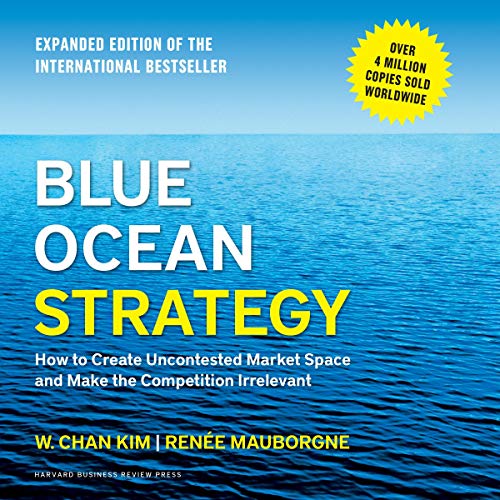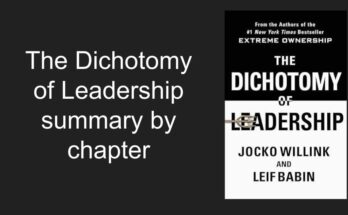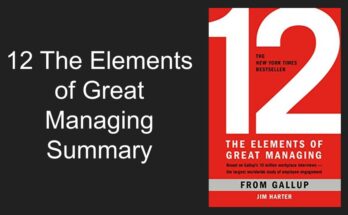In the Blue ocean strategy book summary, I will briefly share important aspects of the book and some practical examples.
The Blue Ocean strategy – How to create uncontested market space and make the competition irrelevant is authored by W. Chan Kim and Renée Mauborgne.
W. Chan Kim is a professor of strategy at France’s INSEAD, the second-largest business school globally.
Renée Mauborgne is an INSEAD fellow, a professor of strategy and management, and a fellow at the World Economic Forum.
What are the takeaways from the Blue ocean strategy book summary?
- Why should you read this book?
- What is the Blue oceans strategy?
- What are the tools for finding blue oceans?
- How did an Australian wine producer create its blue ocean strategy?
- How to chart the path to the Blue oceans?
- How to visualize blue ocean opportunities?
- How to execute, sustain and renew changes?
Why should you read this book?
Blue ocean strategy book was an instant bestseller across the globe and has won many awards and recognition.
It offers a plethora of information on the history of strategies and strategies that worked for more than 30 industries.
The authors have put case studies and research that make this book relevant to all business leaders across the globe.
It can serve as a blueprint or handbook for business leaders to identify unknown profitable markets waiting for them to explore.
What is the Blue oceans strategy?
Before we get to what is the Blue ocean strategy? Let us understand what the blue ocean is? And why is it required?
Today, businesses face high competition compared to earlier. The author terms the Red Ocean an ocean of bloody mess. Here competition fights for market share with the same tactics and products.
Opposite of the Red Ocean is the Blue Ocean, where there is no competition or maybe too little competition to face.
What is Blue Oceans?
The Blue Oceans are the business opportunities yet not explored by industry. They are unknown but a potential marketplace.
Why is it called Blue Ocean?
Blue Ocean is yet to be explored, deep, vast, and possible opportunities for growth to the business.
What is Red Oceans?
The Red Oceans are the known marketplace for industries, and there is so much competition in the Red Oceans.
Why is it called the Red Ocean?
The Red Ocean is bloody with cutthroat competition prevailing in the existing marketplace.
So What is the Blue Ocean strategy?
The Blue Ocean strategy helps businesses to create demand and find new markets that other businesses are yet to enter.

The Blue ocean strategy takes business to the market with more opportunities and less competition.
Businesses can focus on creating new markets rather than fighting over market share with the help of the Blue ocean strategy.
What are the tools for finding the Blue oceans?
Blue ocean strategy comes up with a set of tools that can be used by any business to find out their blue oceans.
- Value innovation
- Strategy canvas
- Four Actions Framework
- Six paths framework
- Pioneer Migrator settler map
- Three tiers of noncustomers.
- The sequence of creating the blue ocean.
- Buyer utility map.
For the Blue ocean strategy book summary, it will be difficult to share all the blue ocean tools in detail. However, I strongly recommend buying this book to understand these tools in particular.
Here is a brief detail on a few of the tools.
Value Innovation
Value innovation is the tool that can help businesses to align their system of utility, price, and cost.
While business focuses on aligning these three, it equally serves the customers and business.
It will give businesses insight into what factors to eliminate, raise, reduce, or create to find their own blue ocean.
Strategy Canvas
Strategy canvas captures current strategic situations and future prospects for the businesses, and it is a crucial diagnostic tool for Blue Ocean strategy.
Strategy canvas enables business leaders to focus more on alternatives than the competition, from existing customers to prospective customers.
Four Actions Framework
As found in value innovation, business needs to decide on what factors to reduce, create, eliminate and raise to see their blue ocean.
In this framework, businesses need to answer four questions.
- Which factors shall be RAISED above industry standard?
- Which factors can be CREATED that industry has not?
- Which factors shall be REDUCED below industry standard?
- Which factors can be ELIMINATED that the industry has not?
Six paths framework
To win blue oceans, businesses need to stop fighting competition and start looking for other alternatives. The authors share a six paths framework that can help businesses identify new customers and new markets, i.e., their blue ocean.
- Look across the alternative industry.
- Looks across strategic groups within the industry
- Redefines the industry buyer group.
- Looks across to complementary product and service offerings
- Rethinks the functional-emotional orientation of its industry.
- Participates in shaping external trends over time
How did an Australian wine producer create its blue ocean strategy?
When Australian wine producers entered the market, they faced the problem of the red ocean.
They created a middle ground for themselves by choosing price points for premium and jug wines.

The company changed to focus on new customers that are not regular wine drinkers, and they focused on the consumers who drink other kinds of alcohol.
These new customers demanded different tastes, so Australian wine producers developed wine with a fruity and sweet taste.
In addition, Australian wine producers found their own Blue ocean by focusing on new customers, new products, and new price points compared to the industry.
Surprisingly they created just two types of wine offerings and created a profitable marketplace for themselves.
Australian wine producers made a difference by focusing on price points and the new market, while other wine producers made the same wine with little contrast and fought for market share.
How to chart the path to the Blue oceans?
In the Blue ocean strategy book summary, we discussed tools for blue ocean strategy. Business leaders need to use those tools to chart the path to the blue oceans.
The six paths framework can be helpful for any business leader to chart the path to blue oceans.
Path 1 – Look across the alternative industry
Businesses can look across the alternative industry to find their blue ocean.
To find that, they need to look for details that their customers are looking for apart from their product or services but still related to their services.
In the book, the author gives an example of Netjet. They offered one-sixteenth aircraft ownership, where the owner gets free 50 hours per year. It was an innovative idea that eliminated the pricing barrier.
Path 2 – Looks across strategic groups within the industry
Businesses can look across strategic groups within the industry, like finding their niche or a micro-niche where the industry is currently not focusing.
In the book, the authors share examples of Curves, and they found their Blue ocean by focusing on women who want to get back in shape and from the comfort of home.
Path 3 – Redefines the industry buyer group.
The authors argue that there can’t be only one buyer group, but there are chains of buyers with little different needs.
In simple words, business to find their blue ocean need to adopt a more extensive definition of buyer than the industry set standard,
Path 4 – Looks across to complementary product and service offerings
Businesses must define the solution buyers seek while purchasing the product or services. Businesses can do that by gathering data about what customers do before, during, and after buying their products. To tap into this, businesses can explore offering complementary products and services.
Path 5 – Rethinks the functional-emotional orientation of its industry.
Buyers are human, and humans are emotional; businesses should focus on the emotional side of the customer.
The industry currently focuses on the functional side of the product and services that can be reflected in its marketing tactics. However, focusing on emotional features will drive more sales to any business.
Path 6 – Participates in shaping external trends over time
Remember when you needed to buy a CD to listen to just one song, sometimes you may not even need other songs, many of you may know that was an utter waste of time and money.
iTunes by Apple changed the whole game by focusing on time as a commodity for customers, and we know the history.
How to visualize blue ocean opportunities?
Visualization is the way of making things happen, and if you can see it in your mind, you can make it happen in reality.
Blue ocean strategy tools shared in the book can be used to visualize opportunities. This short blue ocean strategy summary will share the authors’ four steps to imagine blue ocean opportunities.
Step 1 – Use the strategy canvas tool to draw a clear picture of the business and where it can go? Or what opportunities are there?
In the strategy canvas tool, there is a comparison of business based on various factors that give a clear picture of opportunities that can be explored.
Step 2 – Using six paths for creating a blue ocean- tool, this tool will help businesses understand what factors to reduce, raise, create, or eliminate.
It can also serve as a tool for gap analysis with business and industry to identify the blue ocean opportunities for businesses waiting to be explored.
Step 3 – In the third step, gather information on your customers, competitors’ customers, and noncustomers. Understand their need and requirement by using three tiers of customer tools shared in the book.
Three tiers of customer tools can help businesses identify new customer bases or gain greater insight into their current customers’ needs. Then, businesses can create their future strategy based on this information.
Step 4 – Communicate the new strategy to all stakeholders of the business.
The authors explain that business leaders should create a one-page summary of the old and new strategies and share it with all stakeholders.
How to execute, sustain and renew changes?
Finding the blue ocean and moving towards it is difficult. Businesses face problems related to change management like low motivation and doubt from employees, insufficient resources, and some political opposition.
Kim and Mauborgne share that instead of fighting with these obstacles, they understand and use them to the business’s advantage.
These factors have their influence on the organization and can become a hurdle for reaching the blue ocean,
The authors have come up with two strategies that any business can apply.
The first way is to shift the mindset from problems to the solutions that blue oceans can bring to the table.
The second way is to have a clear organizational communication structure that removes the fear of the unknown from the people. For example, businesses can have town hall meetings, direct customer contact, and open house discussion with stakeholders.

To sustain and renew changes, businesses must invest in limitations or barriers for others to enter their blue oceans.
Businesses can achieve this by investing in patents, royalties, and licensing to safeguard their blue ocean from the competition.
Who should read this book?
Business leaders want to explore new markets, CXO of large/old organizations, and anyone interested in learning business strategy.
Blue ocean strategy book summary included some of the important concepts in brief here; for more information, buy this book.



